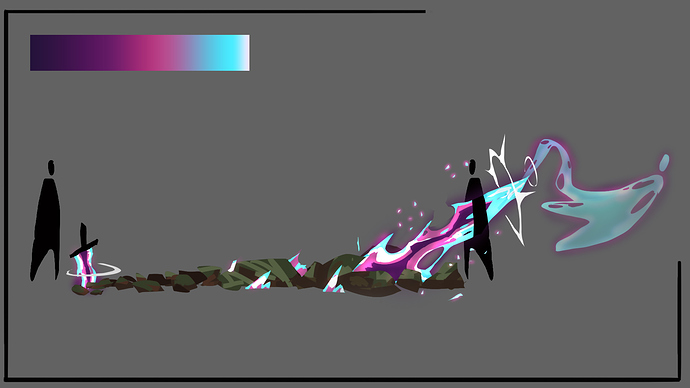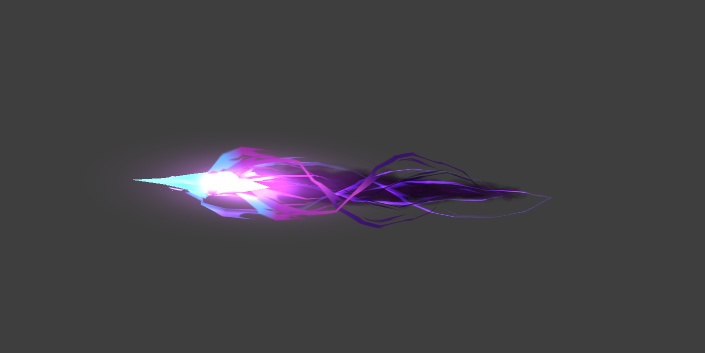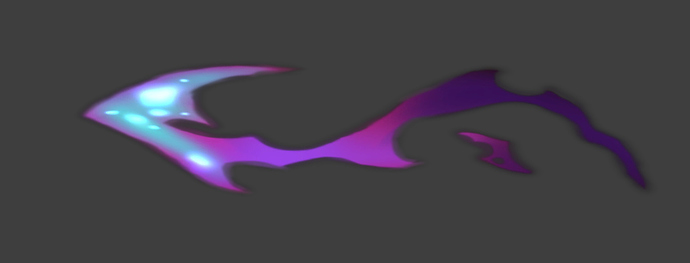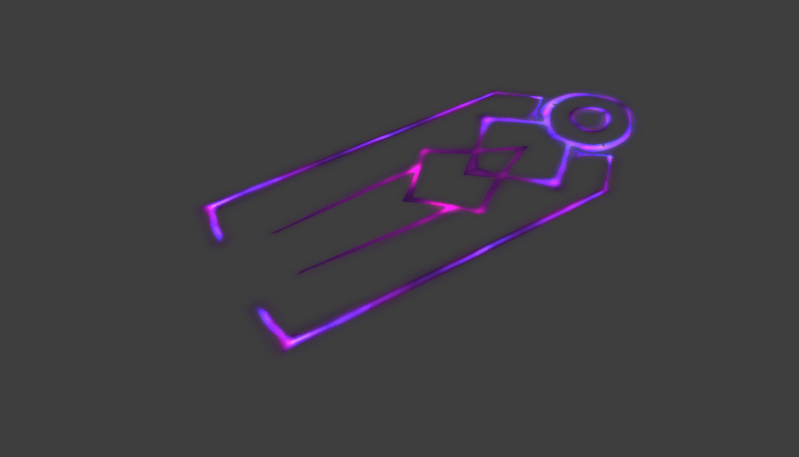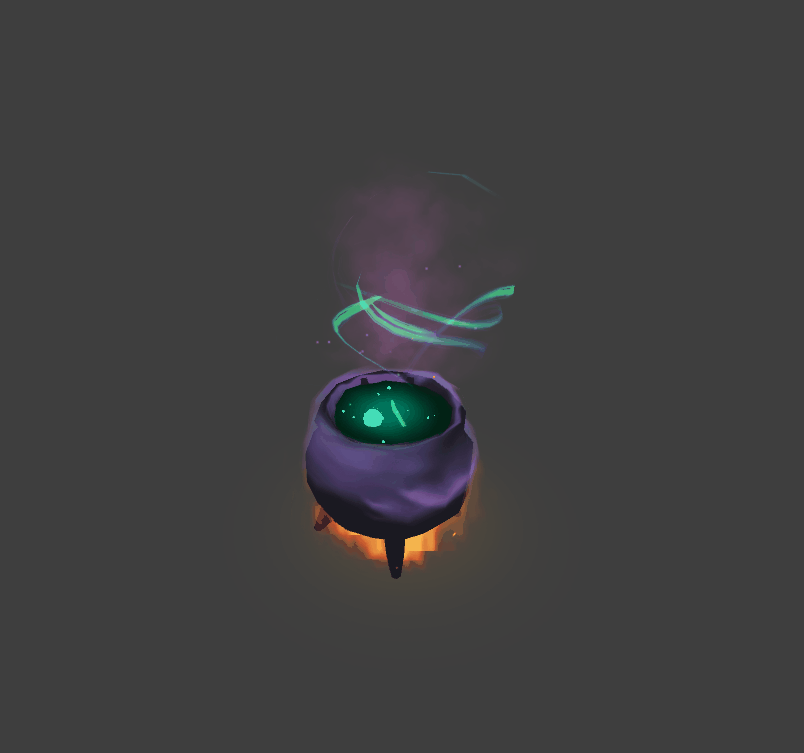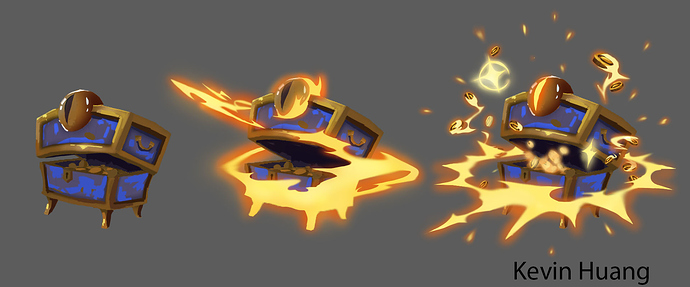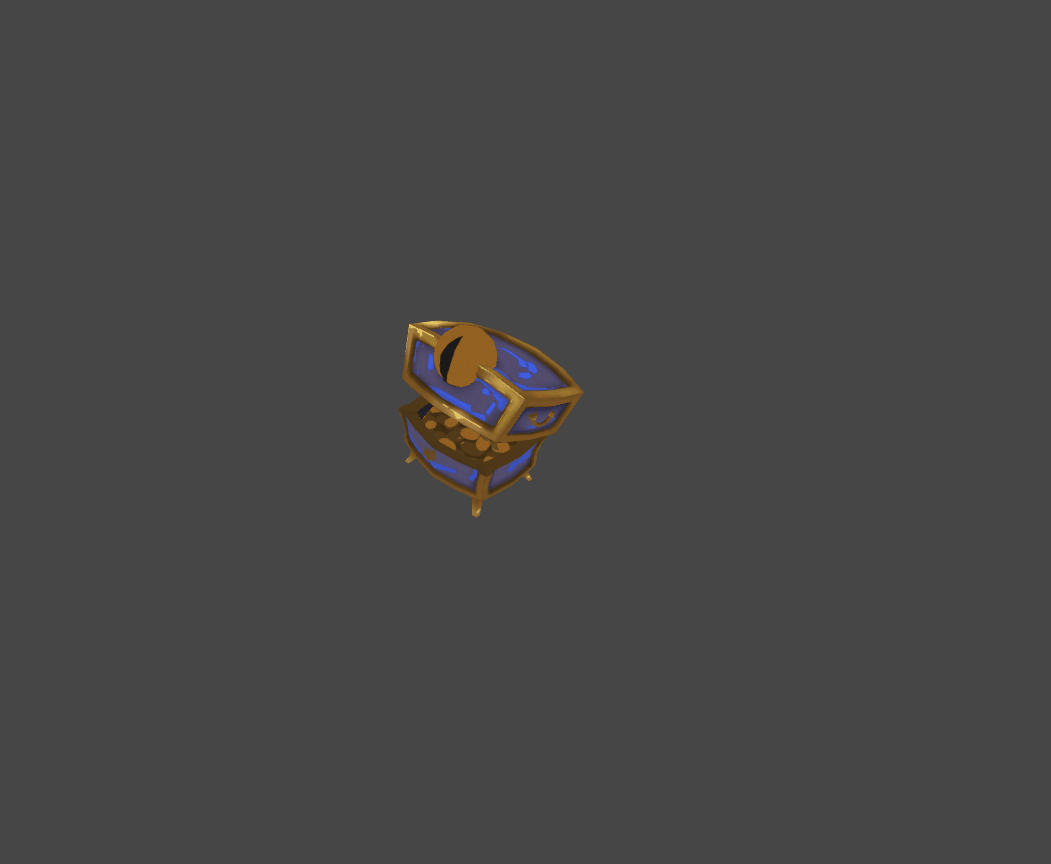Great stuff here. I wanted to offer a few thoughts concerning your original post:
What I can say is that you’re off to a very good start, and the major question here is how to take your awesome 2D experience and translate it into believable 3D elements. One thing I’ve found helpful is going back to the roots of how elements work in real life. For instance, fire always has a fuel source. So as I’m building a flame, yes I put a couple of emitters to build the burning plasma, but I also need to make sure there’s a bright hot point at the core of the flame, or the fuel source. Also, fire emits smoke, so some subtle smoke puffs would also be helpful. Your “rainbow” element sword struggles the most of those 3 with having a defined cause/effect between its emitters. Currently, it betrays itself as a particle system, and fails to sell itself as a believable magical reaction.
If you look at this Lux laser breakdown, you’ll notice how I used multiple emitters to represent different things: some are lens flare effects, some are glowing fuel sources, some are discharged energy bits, and some are the burning plasma coursing through the body of the effect, burning off of the intense fuel source at the core.
The tricky part is finding a balance between enough emitters to portray each component of the effect, but make them work together in harmony to make it overall believable. To do this, I find it helpful to put each emitter into a bucket: primary, secondary, and tertiary. Primary elements are the hottest, most intense, and most important for gameplay. Typically, they are closest to white, or the most saturated, or the most opaque. Seconary elements are the theming of the effect. Think flame shapes vs splatter shapes. They should generally be less saturated, less opaque, and lower value contrast. Tertiary effects are the flavor of the effect. These should be so subtle that the viewer misses them on the first or second watch. Rays of light, subtle fuzz ball glows around the outline, dust, and tiny sparks would be examples of tertiary elements. We’re talking 10% opacity or so here. Very subtle, like a dash of salt to give flavor to the effect.
Your work is looking fantastic. You’re well on your way, given the time you’ve put into developing your 2D skills. Moving to 3D engages a different part of your brain as you learn the tools, but never lose sight of the artistic direction you’re currently demonstrating in your 2D work.




